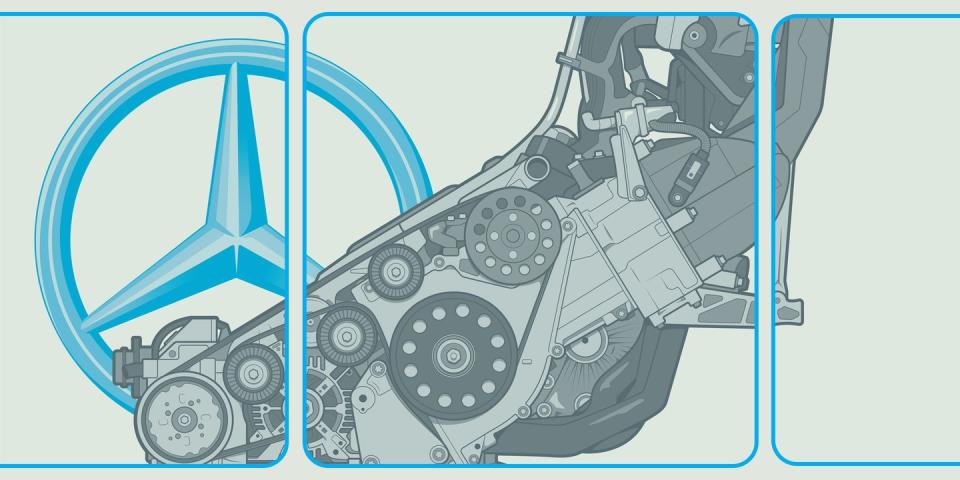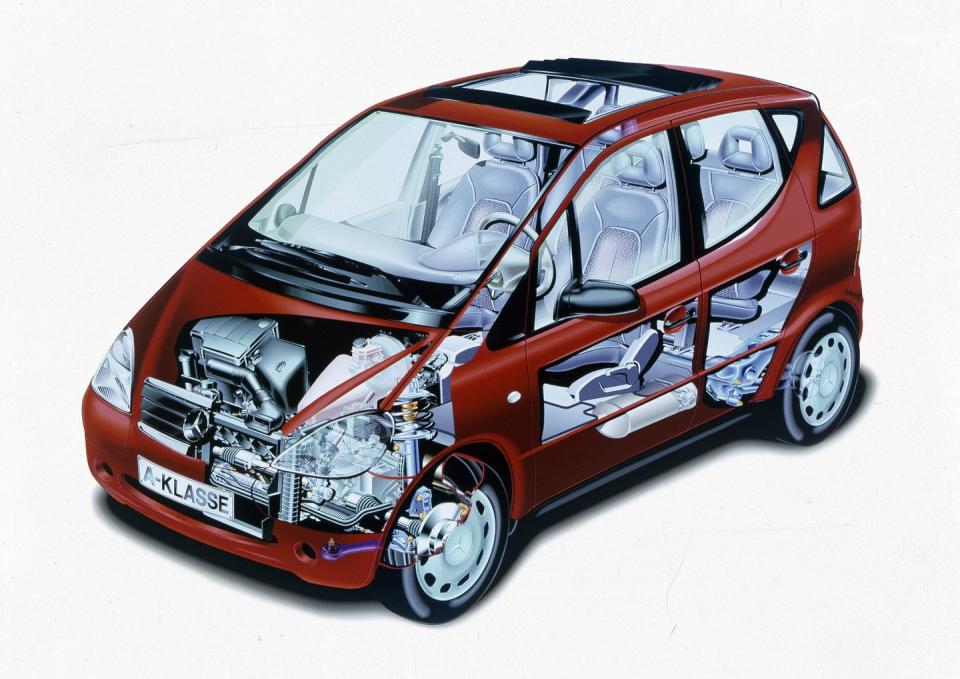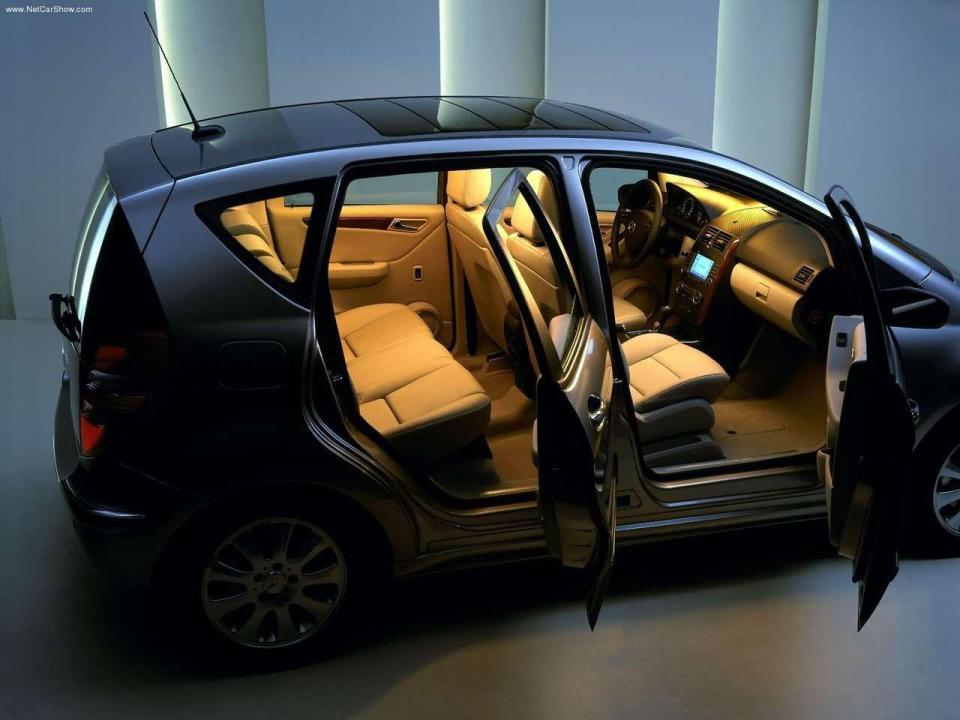To Build a Safe, Tiny Car, Mercedes Had to Make a Bizarre Engine

We as a people have known for a while that when space is limited, you've got to build up, not out. It's the basic tenet on which cities are formed. It was also the design brief behind the first Mercedes-Benz A-Class. In the Nineties, there was a push for smaller, more intelligently designed cars. Global population had grown rapidly since the Fifties, and cities were getting increasingly dense. Mercedes wanted to present a solution to the problem, and did so with a car that was unlike anything it had made before, or since.
The idea for the first compact, front-wheel drive Mercedes was to offer C-Class-esque interior space on a significantly shorter footprint. The A-Class also had to be as safe as an E-Class, and this required a very different approach to packaging and one of the weirdest engines we've ever seen in a car.
On its own, the M266 engine isn't too interesting by Mercedes' vaunted standards. An all-aluminum, single-cam, two-valve gas-powered four-cylinder made in displacements between 1.4 and 2.1 liters and, at most, 138 horsepower, nor the 1.7-liter 89-hp OM668 turbodiesel. What is interesting is that both were canted forward at a 59-degree angle.

Now, a canted-forward engine was not a new thing when the A-Class debuted in 1997. Mercedes itself famously angled its big 3.0-liter six 30 degrees to fit under the low hood of the 300SL Gullwing in the Fifties, and the Chrysler slant-six sat at the same angle for its run from late-Fifties to turn of the millennium. Lancia also canted its Sixties/Seventies V-4 over at 45 degrees for similar reasons, but what was unique about the Mercedes A-Class engines were both the dramatic angle, and the fact that it was done in a transverse-engine platform.
In the A-Class, the occupants sat on a false floor about 8 inches taller than the actual floorpan. Mercedes called this the "sandwich" principle and the idea was to create lots of occupant space on a small footprint, without compromising crash safety. In the instance of a frontal impact, the engine and transmission were designed to slide along the pedal box and under the floorpan, protecting the passenger compartment without the need for a large crumple zone at the front. This, in theory, saved money, and weight, while allowing the A-Class to pass both European and U.S. crash tests. The A-Class had steel bars running lengthwise across the car to absorb much of the impact in a frontal collision, and it was thought that the car would perform well in side impacts because a conventional car's front bumper would hit the floorpan, not the false passenger floor.

As longtime R&T European editor Paul Frère noted in his October 1997 article on the new A-Class, this sandwich design produced a remarkable car. It was 22.8 inches shorter than the C-Class while offering about as much passenger/cargo room, and even the heaviest variant, the diesel, weighed just 2350 pounds. A diesel Golf weighed about 2600. Think of it this way—the A-Class was about 15 inches shorter than a Mazda Miata, weighed about the same, yet offered room for four plus trunk space.
A fan site for the A-Class says that the M166 and OM668 engines are generally robust, but their unique design makes servicing a problem. For example, replacing a starter motor requires dropping the engine from the car. The A/C compressor and alternator are also located at the very bottom and the oil filter housing is buried up by the firewall. From under the hood, fluid reservoirs and a dipstick are accessible, but not much else.

Maintenance issues aside, the A-Class still presented a very clever vision for the future of the car, but what made it unique also led to a scandal the likes of which Mercedes have never seen. It was big news globally. Swedish magazine Tekins Värld subjected an A-Class loaded with five passengers to a 37-mph double lane change simulating an avoidance maneuver for a moose jumping out into the road. The A-Class failed spectacularly, rolling over in the process and injuring a passenger. In a 2017 interview with Automotive News Europe, Jürgen Hubert, brand chief of Mercedes at the time, said "[t]he problem was rather a combination of the position of the center of gravity and the chassis adjustment in an extreme driving situation."
The so-called "Moose Test" is a standardized procedure made popular by the Swedish automotive industry. It's about as extreme a test as a car can be subjected to, and even now, many popular cars have trouble passing.

 Yahoo Autos
Yahoo Autos 